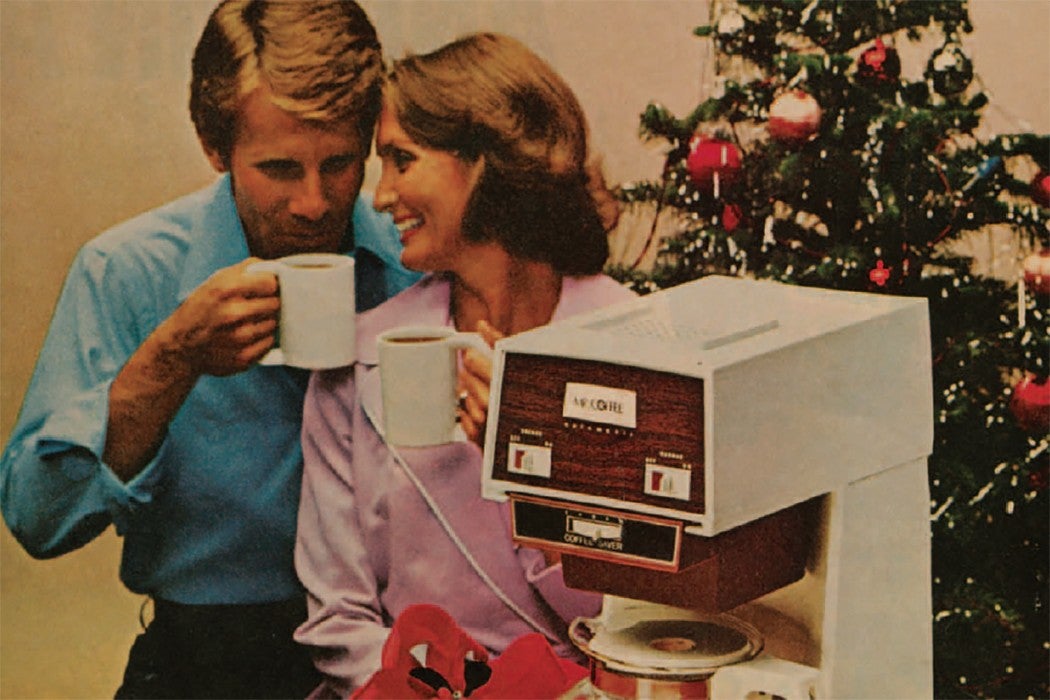For caffeine addicts, a morning without a pot of coffee is a no-go. But it hasn’t always been as convenient to make coffee as it is today—and as Rebecca K. Shrum writes, the dawn of coffee machines came along with a massive dose of manly marketing.
Mr. Coffee, the first electric-drip coffee machine for home use, debuted in 1972, forever changing the way Americans made coffee. Before its rise, women used percolators to brew their coffee on the stovetop or on the counter—a method that produced bitter, scorched coffee. Despite the availability of complicated, non-electric drip systems, percolators ruled American kitchens.
They also gave American women a reputation for brewing terrible coffee. Part of that was based on the coffee supply itself, writes Shrum. Due to wartime shortages and poor quality, “coffee tasted bad no matter what brewing method consumers used.”
At the time, women were households’ primary coffeemakers, and cultural pressures such as the popularity of percolators as wedding gifts kept the task in a firmly female sphere. In turn, writes Shrum, “cultural representations of coffee making blamed women and showed them being punished by their husbands for the poor-tasting coffee most Americans brewed at home.” Coffee ads portrayed coffee-induced domestic abuse and threatened women who made bad coffee with social ostracism and relationship problems. This cultural pressure cooker presented the perfect opportunity for Mr. Coffee.
Mr. Coffee looked and worked differently than percolators. It also made better coffee. Since it automated the superior drip coffee technique, it gave even groggy consumers the chance for a good cup. It was also dramatically more expensive than a percolator.
In a bid to get consumers to give up their familiar percolators for this expensive new product, Mr. Coffee included something unexpected in its marketing: men. Not only was it given a masculine name, writes Shrum, but its marketing suggested that it would produce a man’s preferred brew. The company hired Joe DiMaggio to give his masculine endorsement to the product—adding an additional layer of masculine advice to a product that purported to teach women how to make a better brew.
But Mr. Coffee did more than mansplain. It played into stereotypes of men as arbiters of coffee quality, and encouraged men to get into the kitchen themselves. Since it was so easy to use, men no longer had an excuse to cede coffee-making to their wives. This corresponded with women’s increased entry into the workforce and helped men contribute more to their households.
Today, the thought of a man unwilling to brew a pot of coffee (or so upset about his coffee’s quality that he abuses his wife) seems preposterous. Mr. Coffee changed those cultural expectations, even as it played into existing stereotypes about gender and domesticity. It all goes to show that everything around us is steeped in historical and cultural significance—even that morning cup of joe.







